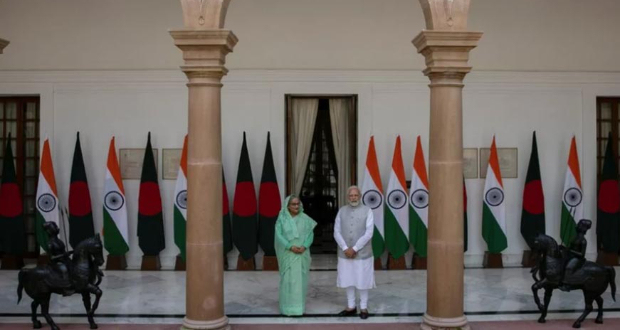Her second trip from June 21-22 involved interactions with the Indian President Draupadi Murmu, Vice President Jagdeep Dhankhar, PM Modi, and the Indian Minister for External Affairs S Jaishankar.
This is the first bilateral visit from another head of government after the formation of the new National Democratic Alliance (NDA) government in India, following the conclusion of the 18th parliamentary election earlier this month. The visit not only symbolizes the significant diplomatic value that India and Bangladesh accord one another but is also strategically symbolic as it comes before PM Hasina’s scheduled visit to China in July, and with an invitation for Prime Minister Modi to visit Bangladesh.
The future vision statement released shortly after the visit is comprehensive and outlines multiple areas of cooperation in which India and Bangladesh will continue to cooperate in the coming years. The statement commences with the articulation that it is reflective of the all-encompassing partnership between the two countries built on shared values, trust, interests, equality, and understanding, that is “rooted in mutual sensitivity to each other’s aspirations and concerns.”
This is an interesting turn of phrase, not found in the joint statements that have been issued in the recent past. As such it may be interpreted as an indication of India’s consciousness about the Teesta issue and how it impacts the people of Bangladesh, and its desire to resolve this long pending concern.
Teesta is one of the four major rivers of Bangladesh and a primary source of livelihood for the agrarian population living in the country’s northern provinces. Naturally, the issue has been deliberated upon multiple times by both countries but federal complications between the government of India and the government of West Bengal from where the Teesta flows into Bangladesh prevented the conclusion of an international agreement. It is in these circumstances that China offered to invest in Dhaka’s Teesta River Comprehensive Management and Restoration project as the river is important for its strategic Belt and Road Initiative (BRI).
However, this would bring China within 100km of India’s border, close to the Siliguri corridor -- a narrow strip of land connecting India’s Northeastern states with the rest of the country. Naturally, this proposition has been a cause of discomfort for New Delhi, especially as it faces border disputes with China along the periphery of its Northeastern state of Arunachal Pradesh.




